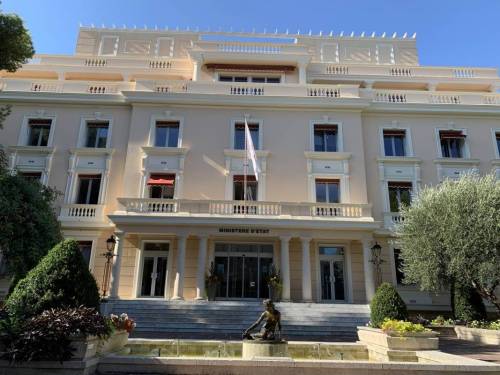Appearances can be fooling, and life is often full of paradoxes. Look at Alexis Synodinos, with his sailor look, his sunglasses, long-sleeved shirt, Bermuda shorts and deck shoes. He seems the perfect man of the sea… but admits to suffering seasickness. But after all, his first passion is not actually navigation, but rather diving. And that’s precisely what inspired him to design a unique boat, ideally made for scuba divers. Its name: Heliodive. “Helio” as the sun in Greek, and “dive” as diving in English, “says this Parisian native with roots from the country of feta and sirtaki.
Like the Solar Impulse
“This boat,” explains Alexis Synodinos, “is truly a friend of divers because it works without fuel, noise, biocide, smoke or smell …” Its strength lies in its roof, made up of 56 solar panels providing 100 watts each. “With this 5,600-watt power,” he calculates, “we can travel at 6 or 7 knots, and I think we can sail day and night without interruption with the batteries that take over. A bit like Solar Impulse did it in its round the world tour.”
Everything has evidently been thought of in case of bad weather. The lithium batteries are rechargeable at the dock with a simple plug. “It’s like the Zoé, we recharge it and go. “It would be difficult to make it more economical and more eco-friendly.”
The other main feature of Heliodive is its silicone coating. “This is the first aluminium catamaran to be equipped like this. This non-biocide coating prevents the shells from sticking and braking the boat. Instead of killing them, they are simply prevented from clinging to the hull.”
On this sunny afternoon, Alexis and his team settle the final details before launching. Built in Vendée, the boat is registered in Toulon and has been staying for several weeks at the IMS Shipyard in Saint-Mandrier. In the hangar that serves as shelter, the whole team is bussing around this imposing floating craft, 11.70 m long, 5.70 m wide, with a total weight of 7 tons.
De Kersauson and Camas “on their ass”
A former industrial designer, Alexis Synodinos is convinced that his “baby” represents “the future.” In any case, it is a small revolution in the marine world. The proof? Olivier de Kersauson and Franck Camas would have remained “on their ass” when they discovered Heliodive. Certainly the two seasoned sailors, who weren’t born yesterday, had to appreciate the technological advances of the boat. “Even the Maritime Prefect has found it the world’s fastest electro-solar boat in its class,” he added.
Well launched, Heliodive can sail “up to 18 knots”. Demonstrated in Toulon’s harbour. At the controls of his boat, Alexis relishes: “it does very well at sea. Even by force 8, it’s quiet.”
The Navy
The advantage of the boat is to be very thin and to be able to better penetrate in the water. The engines are of German quality—in other words, it’s reliable and sturdy. The DivingO club in Hyères has already tested it successfully.
The last feature of Heliodive is that the motor and rudder controls are electric. In other words, “it’s driving itself, which is a real treat”. In the long term, “we could even control it from a distance, which is of great interest to the Navy.”
For now, it is only a “prototype of a long series to come,” estimated at € 300,000. That is the same price as a thermal powered boat of the same gauge. “Except that behind,” Alexis adds, “there is no gasoline, no maintenance, nothing…”
Several diving clubs have already pre-ordered a model, notably in Spain, Guadeloupe and St Barths. For the curious who wish to discover it, Heliodive was honoured at the “Monaco Solar & Electric Boat Challenge”, which started last week and ran until Saturday in Monaco.








